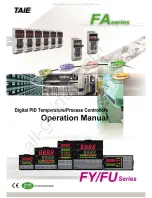
15
Instruction Book IB019009EN November 2017 www.eaton.com
AK-2-25, AK-2A-25, & AK-3A-25 LV-VSR
Breaker-To-Motor Starter Conversion
SECTION 5: INSPECTION
WARNING
BEFORE PLACING THE LV-VSR IN SERVICE, CAREFULLY FOLLOW THE
INSTALLATION PROCEDURE BELOW AND THE SAFE PRACTICES SET
FORTH IN SECTION 2. NOT FOLLOWING THE PROCEDURE MAY RESULT
IN INCORRECT LV-VSR OPERATION LEADING TO DEATH, BODILY INJURY,
AND PROPERTY DAMAGE.
THIS VACUUM BREAKER / STARTER REPLACEMENT IS NOT DESIGNED TO
OPERATE A SEPARATE EXTERNAL AUXILIARY SWITCH (MOC SWITCH).
DO NOT PERFORM MANUAL OR ELECTRICAL OPERATIONAL CHECKS
WITH THE LV-VSR IN THE ‘CONNECT’ POSITION BECAUSE OF THE
POSSIBILITY OF CONNECTING DE-ENERGIZED LOAD CIRCUITS TO THE
ELECTRICAL POWER SOURCE, RESULTING IN DEATH, PERSONAL INJURY
OR EQUIPMENT DAMAGE.
DO NOT ATTEMPT TO INSTALL OR OPERATE A LV-VSR UNTIL A VACUUM
INTEGRITY TEST IS PERFORMED.
DANGER
NON-INTERCHANGEABLE VACUUM BREAKER / STARTER REPLACEMENT
5.1 EXAMINATION FOR DAMAGE
Examine the LV-VSR for loose or obviously damaged parts. Never
attempt to install nor operate a damaged LV-VSR.
When the LV-VSR is first commissioned into service and each time
the LV-VSR is returned to service, it should be carefully examined
and checked to make sure it is clean and operating correctly.
5.1.1 NAMEPLATE VERIFICATION
Compare the LV-VSR nameplate information with switchgear
drawings for compatibility.
5.1.2 CURRENT LIMITING FUSES
The LV-VSR contains current limiting fuses. The primary purpose
of the fuse is to protect the V201 vacuum contactor. The fuses can
interrupt faults up to 200,000 Amperes RMS symmetrical current.
The fuses are Ferraz Shawmut type J AJT600EIB current limiting.
DO NOT replace the fuses with any other type fuse. The fuses have
been tested in conjunction with the V201 vacuum contactor.
Blown Fuse Indication
The fuses have a micro-switch mounted on the body of the fuse.
This switch activates when a fuse blows. If the LV-VSR experiences
a condition which causes the fuse to interrupt current, then the
switch will activate, trip and lock out the V201 vacuum contactor. Any
attempt to close the contactor with a blown fuse will be prevented
until the fuse is replaced.
Replacing Fuses
To replace a blown fuse, follow the removal procedure in Section
5.B to remove the LV-VSR from the switchgear. Once the LV-VSR is
removed from the switchgear and placed outside of the Arc-Flash
boundary, follow these steps:
1. Place the LV-VSR on a stable surface.
2. Remove the four fasteners from the top barrier.
3. Remove the top barrier and set aside.
Figure 5.1. Blown Fuse
Figure 5.2. Removing Barrier Hardware (AK-2-25-LV-VSR Shown)
4. Locate the blown fuse or fuses.
5. Remove the micro-switch from the blown fuse. To remove
the switch, use a flat blade screwdriver to gently pry the switch
from its mounting base.
6. Remove the two fasteners from the blown fuse. Take special
notice of the orientation of the fuse.
7. Remove the blown fuse from the LV-VSR.
8. Install the new replacement fuse with the same orientation
in place of the removed blown fuse.
9. Insert the fasteners with a flat washer into the mounting
hole of the fuse; use a retaining nut with a lock washer and flat
washer to tighten the fuse to the connecting copper.
Figure 5.3. Removing Top Barrier (AK-2-25-LV-VSR Shown)
















































